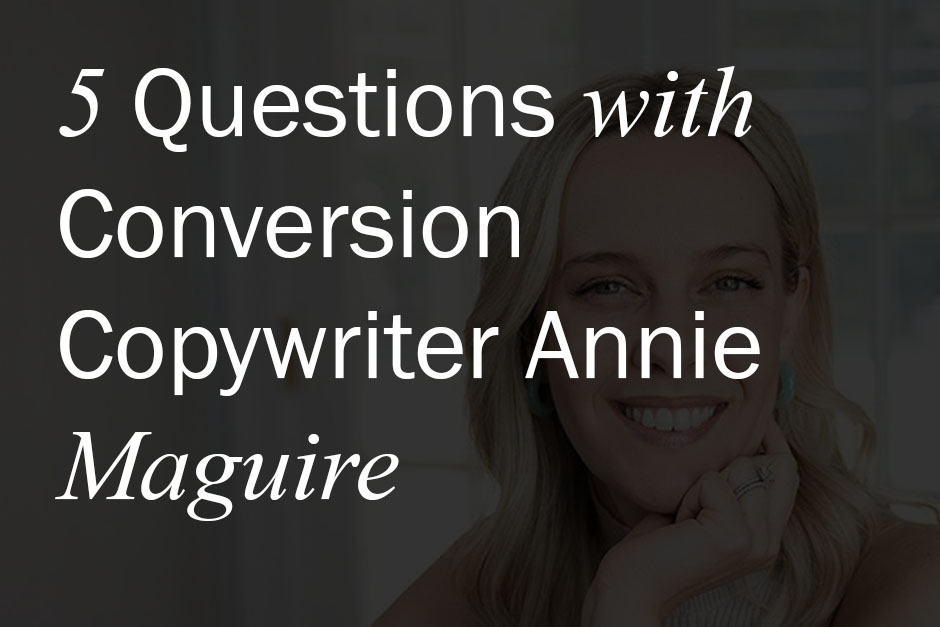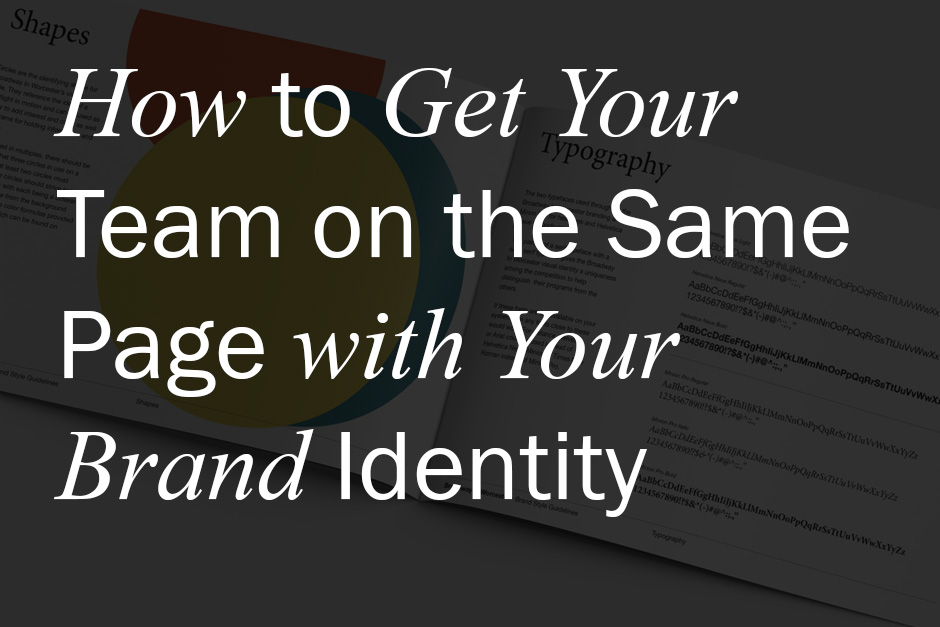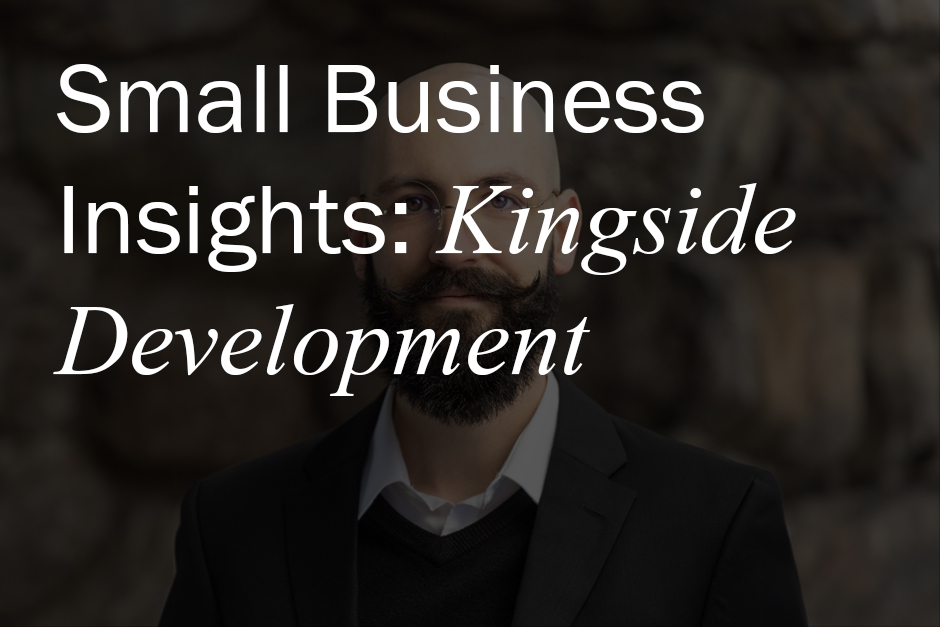3 Areas of Your Company's Online Presence to Improve Right Now

With more of your audience’s attention focused online these days it’s a good time to take a look at how your business is presenting itself. Not only to fix up issues for right now but to adjust and plan for how your business will be operating in the future. Online is where we are headed more so now than ever. From your logo to your social media presence and website, you want to make sure that you are putting your best foot forward for all those customers entering your company’s virtual doorstep. To help you assess and improve your online presence, here are three areas that are worth taking a look at.
1. Logo Design
Your logo is the main identifier of your business. It’s an introduction to your brand and how people get to know your name. Logos can take any shape, style or form but if it’s not a unique and memorable mark it won’t stand out among your competition to be remembered by your audience. When I’m assessing whether or not a logo is “good” or if it “works” I start by evaluating three criteria: size, simplicity and messaging.
SIZE MATTERS:
Does your logo work well at small and large sizes? Your audience should be able to recognize your logo when it’s shown at the size of an app icon or social profile as well as on your store front sign or the side of a truck. A way to test this is to take a photo of your current logo with your phone’s camera and look at it in the thumbnail view of your image gallery. If you can still clearly make out all pieces of the mark then it should be good to work with at small sizes and by default it will work at larger sizes too. However, if you can’t identify the mark when at a smaller size it could be due to how complex it is.
KEEP IT SIMPLE:
When it comes to logo design you’ll notice the most recognizable and well-known logos are extremely simple shapes, letters and marks. The simplicity of these logos makes them memorable and easy to recall. You’re probably thinking of some right now without me even having to tell you. That’s the power of a good, simple logo. Keeping it simple and basic will help make your logo easy for your audience to remember so you stick in their mind. It becomes even more powerful when used thoughtfully and consistently throughout your marketing as well.
SHOW AND TELL:
Michael Bierut, a partner at the design firm Pentagram, said that a logo “is an empty vessel awaiting the meaning that will be poured into it by history and experience.” That means it’s not enough to just make a circle and put a letter in it or use a stock logo template with a random font for your company name. Your logo needs to tell the viewer something unique about your business, even if they don’t realize that’s what’s happening at first. Over time your new logo will be full of meaning if created and used appropriately from the start. Digging into your story is where the good stuff comes out. By exploring what it is that makes your company different from everyone else you then use that information towards crafting a mark that is an appropriate vessel for meaning to be poured into over time.
2. Social Media Profiles
Online everyone is a brand these days and I feel that’s a good thing. Having a social media presence brings forth the good, the bad and the ugly. It makes others pay attention to how you show up online, in turn, it makes you pay attention to how you show up online as well. If you’re aware of how you present yourself (or how you don’t present yourself) then you’ve made the first step on the path towards improving your social media presence. And if how you’re showing up is not in the best light to begin with then you may want to act on that and rethink your approach to what you’re putting out there.
With social media your business can have the attention of almost everyone. And because it’s a visual platform, that means your visuals need to be on point, representing you, your brand identity and your style in the best way possible. Not only does it have to be visually in tune with your other online marketing but it has to align with how you are offline as well. Here are a few things to consider.
C.Y.O.C. (CREATE YOUR OWN CONTENT):
Social media is a great platform for you to share your voice. Remember, your voice is your own, not anyone else’s. Your content should come from you, your thoughts and ideas. This means making and sharing content that aligns with who you are, preferably created for you. No stock photos or memes. Yes it’s a bit more work to create your own content but it will come off as more authentic and real, which provides more credibility to your products or services. If you don’t have control over your own brand voice to attract the audience that you want, someone else will.
GET ENGAGED:
If you want engagement, you have to be engaging. Don’t forget that social media is “social”. People want to hear from you and your vision and thoughts. You may think they don’t but they do. They just don’t know it yet. But it’s not enough to just post about you all the time. You’ll need to equally check in on those you follow and those who follow you. You can do this by commenting, replying, and starting a conversation to remind them that you’re active. Let them know you’re showing up for them. That you hear them and want to be a part of their world to help. Be engaging and you will get engagement.
CONSISTENCY IS KEY:
It’s not enough to just post once in a while. You have to show up everyday on these platforms to have it be most effective. I’ll be the first to admit though that this is one area that I struggle with a lot. I am constantly reminded by others in my feeds who post way more than I do that I’m not showing up enough. So this is a note to myself as well as you.
Being consistent is probably the area in most of our lives that is the hardest to do. But how do we expect people to find us and remember us online if we don’t show up regularly to make our voices be heard with the same voice coming through time and time again? We’ve got to make a plan, get organized and take action. Not every post will be perfect. In fact, 90% of most of what we all create is not good. But we must keep going if we want to make any sort of impact on people. One solution that could help is to not think of it as creating content but more as documenting your process. With that mindset shift it becomes a bit easier to not get hung up on what you’ll be creating. If you’re just documenting your life, your work and your process, then it’s all right there for the taking.
3. Website Design
Your website is your front door to the world. It’s your shop window. Especially these days now more than ever. If you don’t have a website, you don’t look official or established to your intended audience. Having your own company website gives you much more control over your own space online versus using only a social media platform as your home base. And as you would when you invite guests into your home, you want to make sure that it’s presentable and uncluttered so they can easily find their way around. Here are a few points for you to assess your own website and help you clean up your online home:
WHAT’S YOUR MESSAGE?
Your website is the place where people will most likely go first to check you out before calling or setting foot in your business. What they’re looking for is to see if you are speaking to them. They want to know if what you have to offer is inline with what they’re looking for in product, service and also what they believe. They may not know this is what they’re doing but in the back of their mind, it is. It’s what we all do.
So from the start you want to make sure that what your saying and presenting throughout your website is inline with your brand voice, established visual identity and purpose. Everything from the logo to the text and images need to reflect who you say you are as a company. This goes back to having consistency. If your website is not inline with your business, how are people to trust that they’ve landed in the right place? How will they trust that you’re the expert in your industry that they need if the messaging is mismatched? Consistency helps establish your credibility.
GET ORGANIZED:
A website is a tool that provides information about a particular topic of interest in a quick and easily accessible way. I liken it to a book or a magazine. If the pages are out of order or missing and there is no logical flow to it, then it’s going to be difficult to read. It will take more time and effort to find what you’re looking for. It will cause frustration so you’ll most likely not finish it and never go back to it again. That’s probably not what you want your customer to experience with your website; especially if you’re trying to get them to buy something from you.
From page to page your website should have a logical flow to it that makes sense of your brand to the viewer. Most well-designed and established websites have a layout that is pretty standard these days. Logo in the top left corner. Navigation bar at the top of the page. A big image or slideshow banner under it with some text overlaid on top stating what the company does. And as you scroll you’ll see information about products or services below all that. It’s a basic template for a website layout that works and is found in most of the major online website do-it-yourself platforms such as Wix and Squarespace. Using a template is a great starting point towards proper organization but also keep in mind how you would like it to evolve in the future.
FUTURE PLANNING:
Your website should be adaptable and expandable for change as your business grows. A lot of times this can be forgotten. How will your website need to be designed to work for your ideas five years from now? What do you need to do to carve a path that will help plan for future growth. Keeping these question in mind in the beginning will help give your website design and layout the room it needs to expand.
One of the issues that I see with most small business websites is that they didn’t plan for this future grow. Over time there is no room for adding more information to your website, these templates break down and chaos ensues. The pages get out of alignment or go missing entirely. The links in the navigation bar are not found in their logical locations. Brand colors change between pages and mutate becoming unrecognizable from where it started. Overtime everything gets out of whack and needs to be rebuilt upon a solid foundation. A house shouldn’t be built without solid blueprints and neither should your website.
Conclusion
The future is an unknown and scary place that is hard for us to see. Hopefully following the guidelines above will help set you and your business up for a more direct and clear path towards establishing a better online presence for your company. We are all working to build our best future and sometimes that means taking a close look at what you already have then cleaning it up so you can move forward more directly and with purpose. These are just the basics of what can be done but starting somewhere is better than not starting at all. Now get to it.
Drop me a line if you have any questions or would like help with any of this.
If you found these tips helpful, join my biweekly newsletter where I share inspiration, insights, and resources to help your small business reach it’s big goals.
Recent Posts
How to Get Your Team on the Same Page with Your Brand Identity
Read This Before You Hire A Logo Designer for Your Small Business
Small Business Insights: Kingside Development
Improve Your Branding. Improve Your Business.
Get inspiration, insights, and resources to strengthen your branding and marketing.
Delivered to your inbox every week.



